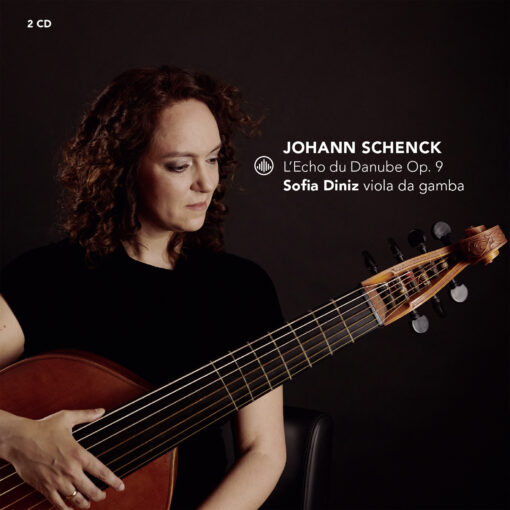Last year, with the support of a scholarship of the German government, I recorded the integral of Johann Schenck’s Opus 9 “L’Echo du Danube”! To be released soon.

L’Echo du Danube is the name of Johann Schenck’s Opus 9, a collection of 6 sonatas, dedicated to the Baron of Diamantstein, the electoral music director. The first two sonatas are for Viola da gamba and continuo, the next two for viola da gamba and continuo „ad libitum“ and the two last ones for viola da gamba solo (subtile on front page of the facsimile).
Johann Schenck, was a Dutch born viola da gamba virtuoso and composer from the late 17th Century and early 18th Century, who was appointed chamber musician of the court later in his life (ca. 1696) by the Elector Palatine Johann Wilhelm I in Düsseldorf.
His work, mainly for viola da gamba, is written in a German-Dutch Baroque tradition and demands high technical skills. Schenck’s contribution to the development of the viola playing is significant and, together with a few other German viol-composers, he establishes a very characteristic style of virtuoso gamba playing, in which the instrument is treated both as a melodic as well as an harmonic instrument, very much in the lute tradition, in which the viola da gamba plays simultaneously the melodies and its own chords of harmonic accompaniment. This enhances the uniqueness of the viola da gamba as an instrument as opposite to the violin family instruments and Schenck experiments freely with the possibilities of the viola da gamba, exploring its technical possibilities to the limit and he is even not scared of a Fugue, of which he includes two in this volume.
In this specific Opus, his last surviving collection of sonatas, we can observe a richness in styles and possibilities made clear by the different influences and innovations in his writing. The first two sonatas, with its quick notes passages and quite galant style, is one example of Italian influence, the two middle sonatas – that one can play with or without the continuo part, hence „ad libitum“ – are written in a French Suite style and not only packed with chords, but also in very daring tonalities for the instrument (f sharp minor and e flat major!) which represents an enormous challenge for the player. The two last sonatas for unaccompanied viola da gamba are more typical for the German style and explore the polyphonic writing for the viola da gamba in a very beautiful way, using not only chords and double stops, but a voice conducting polyphonic writing in a for the lute typical manner.
Additionally to its historical importance in the German viola da gamba repertoire, this sonatas are an unique example of beautiful instrumental music of the baroque period which moves the heart of the listener with its variety of characters and emotions, a kind of swan song of the viola da gamba, as it will soon after loose its popularity.





